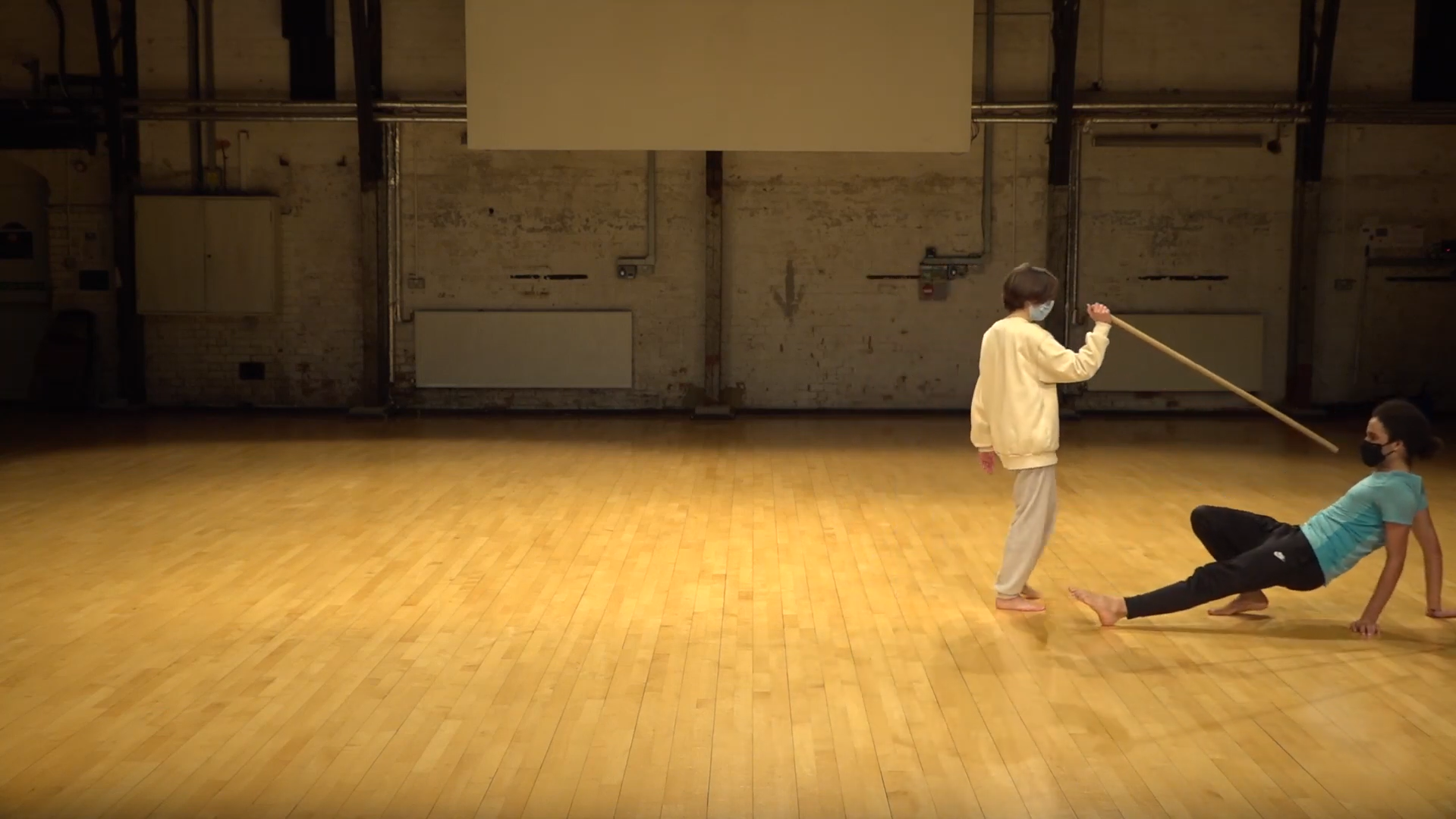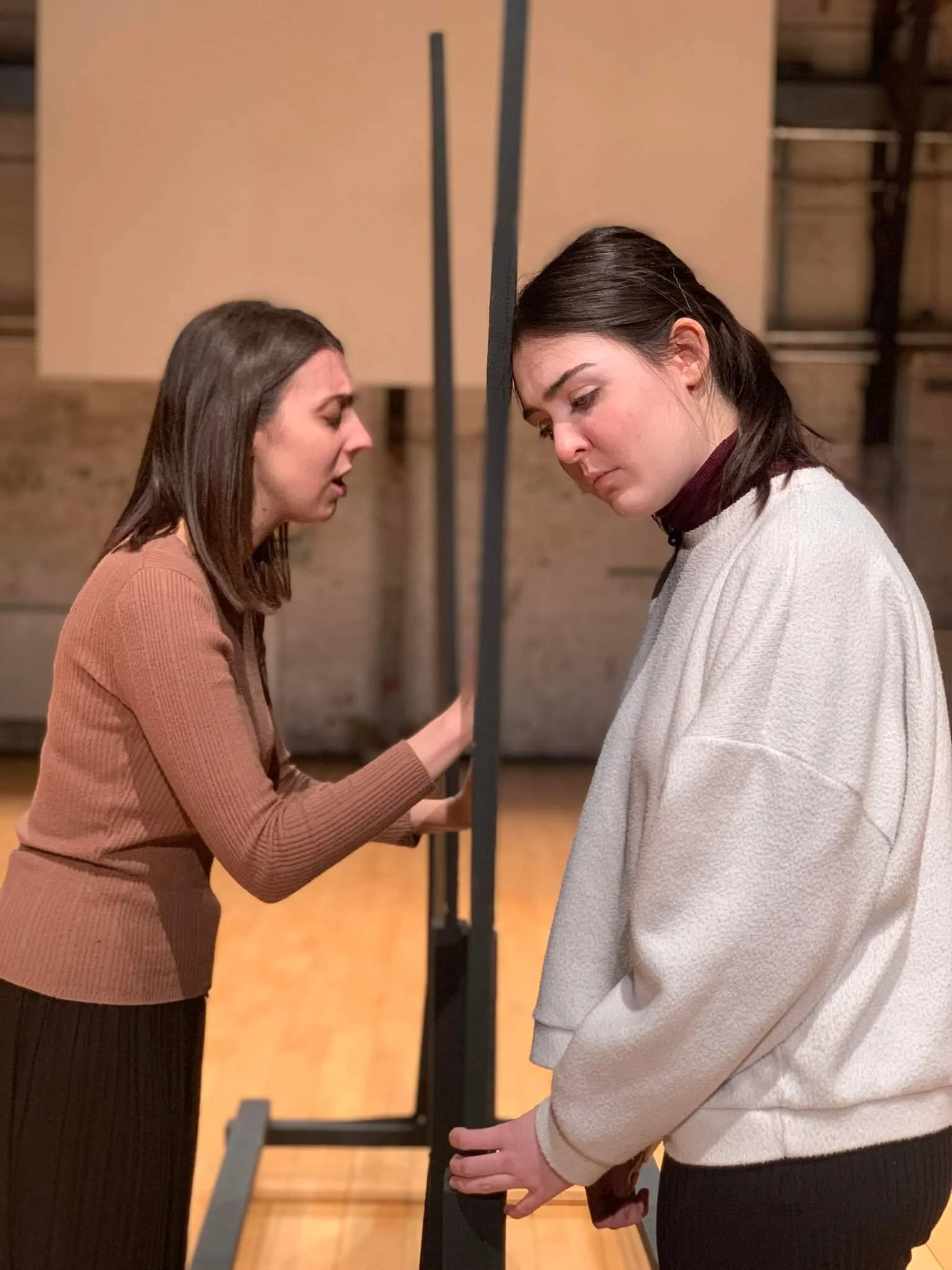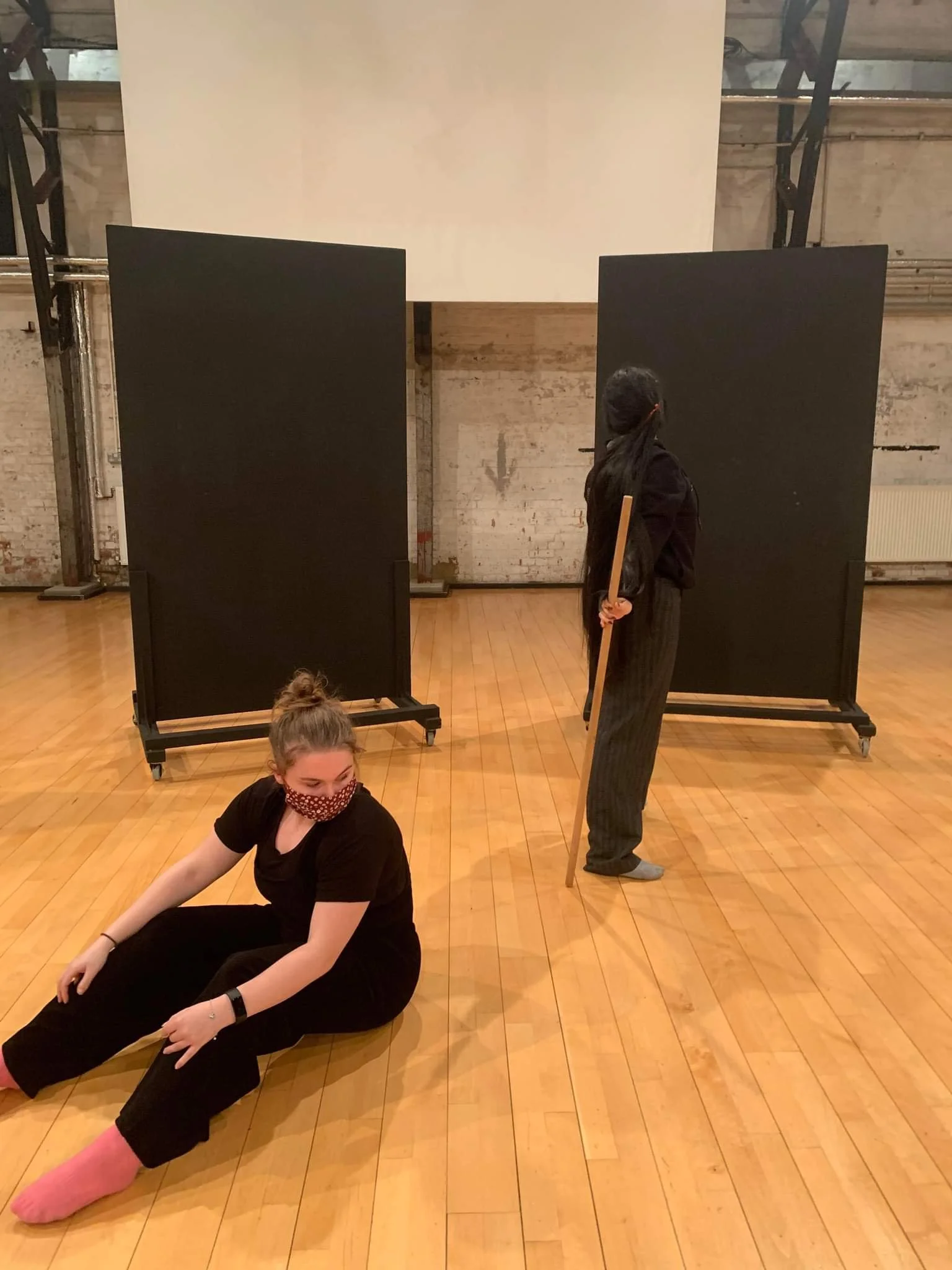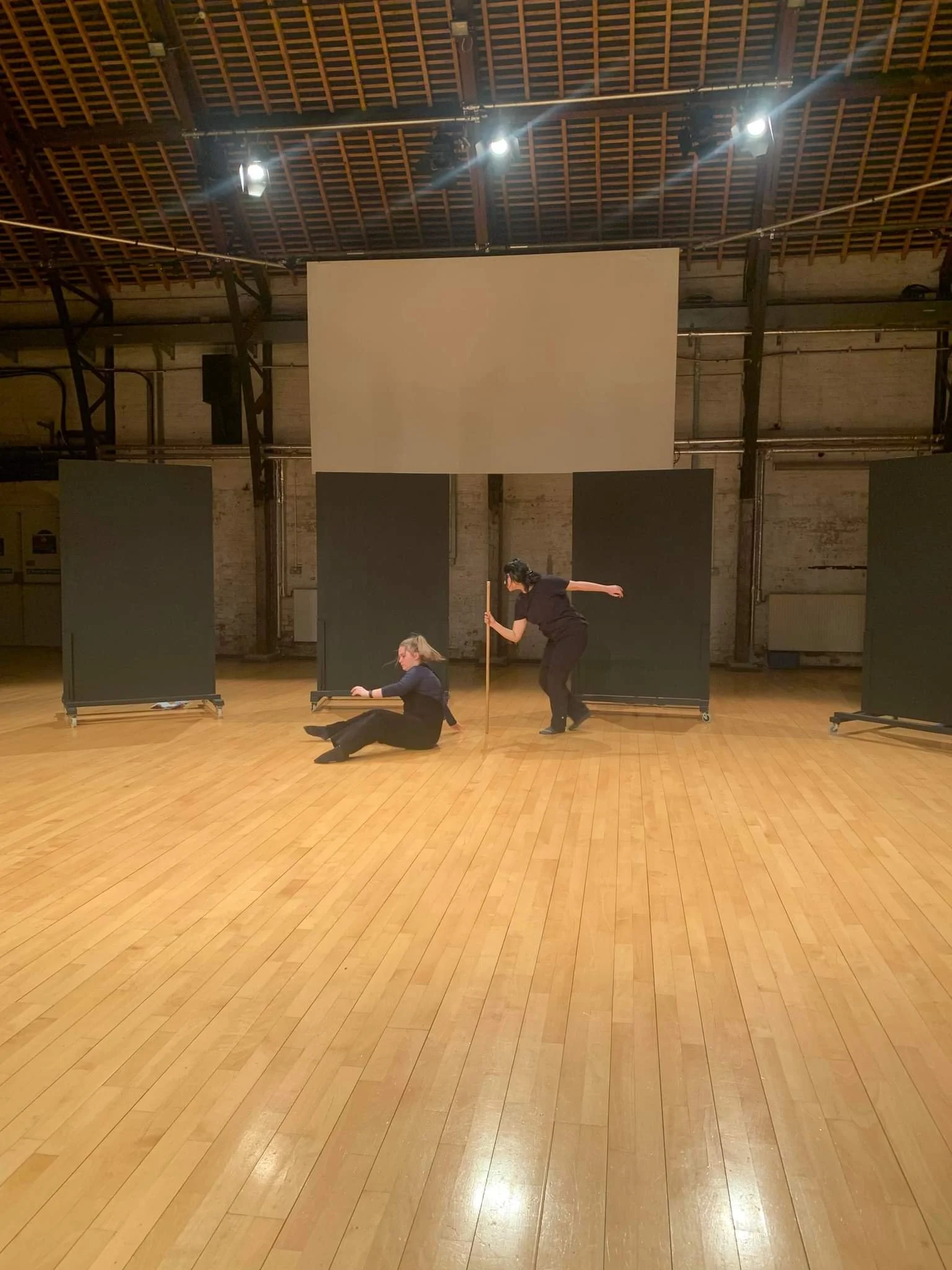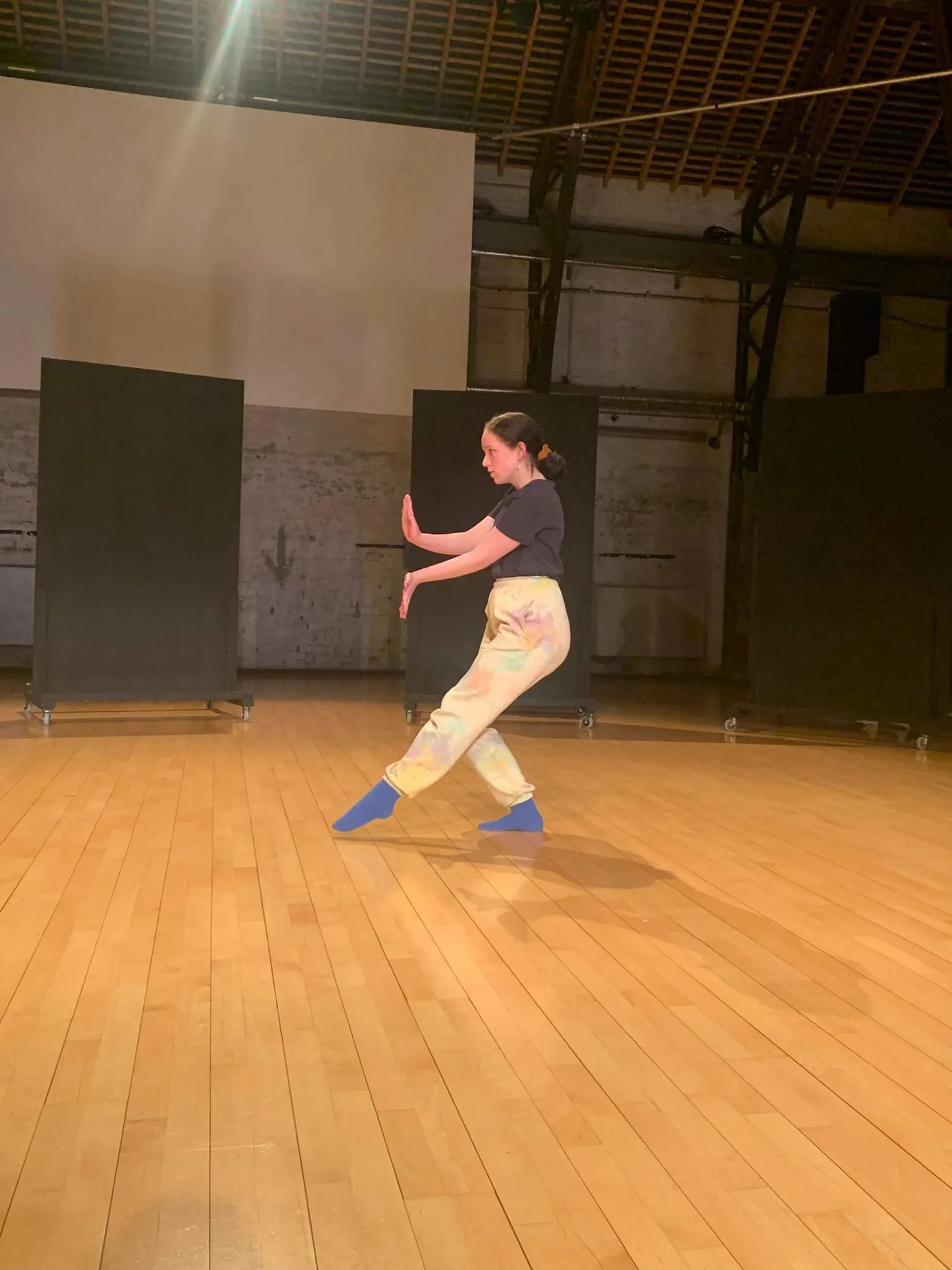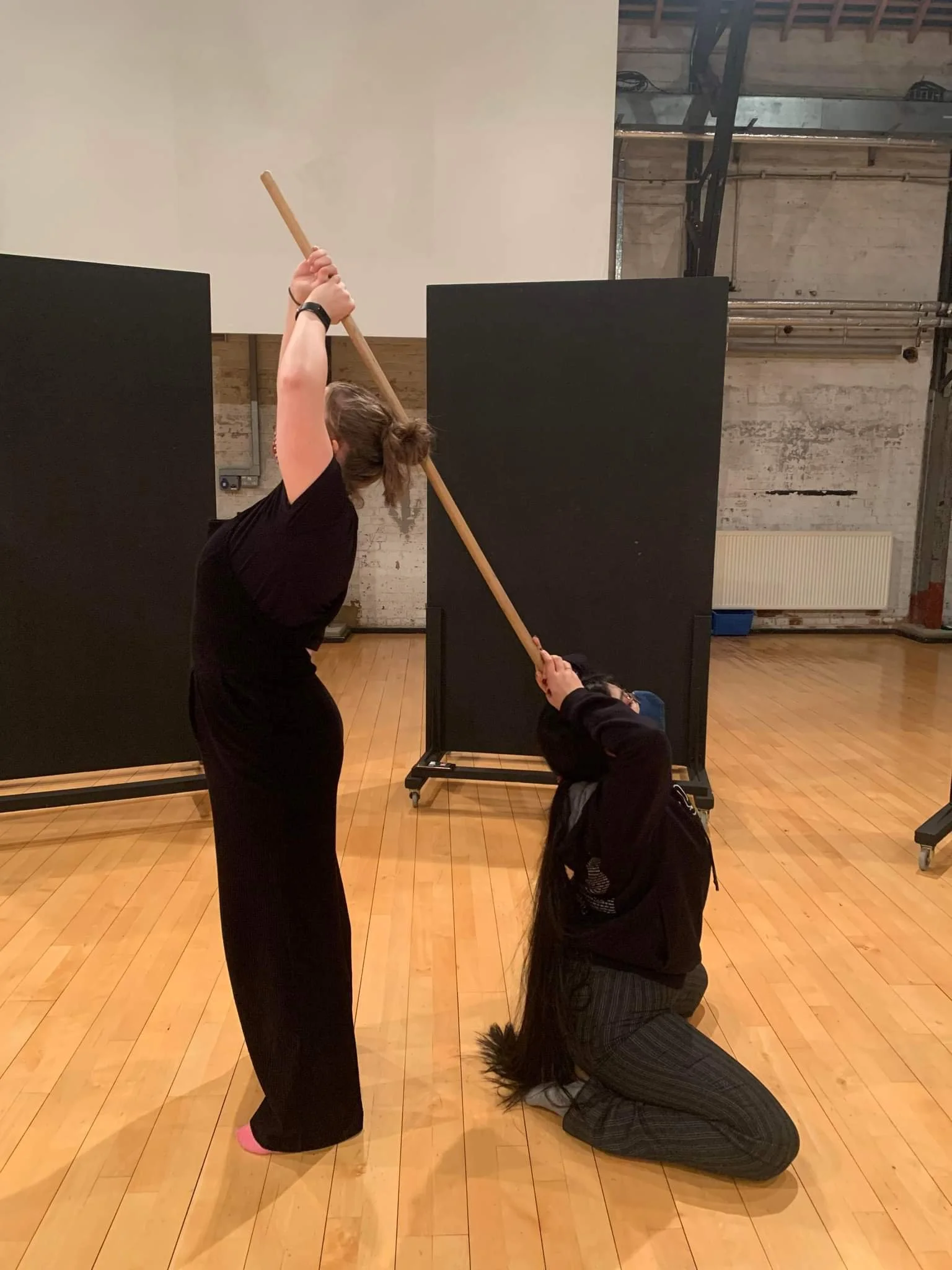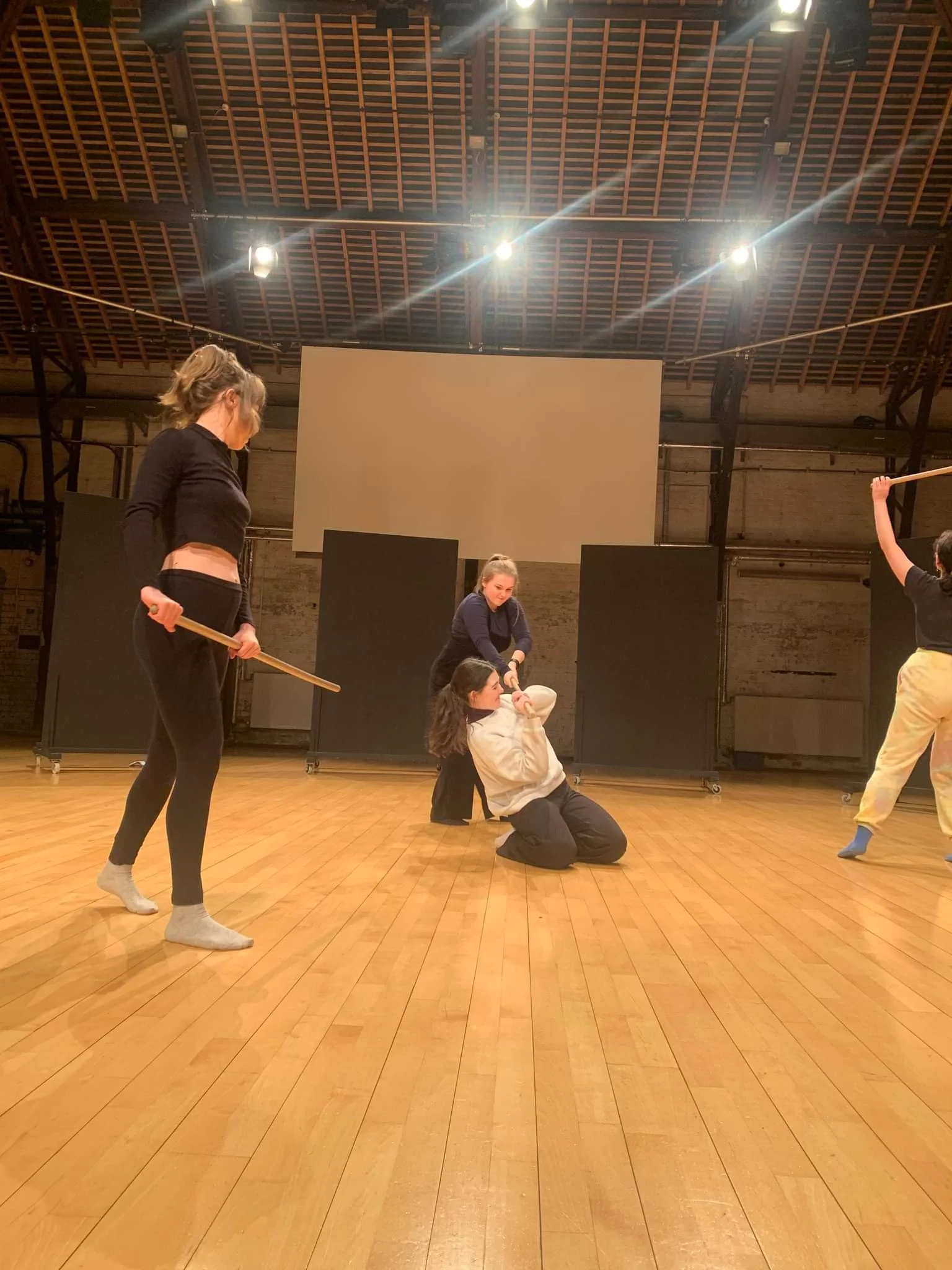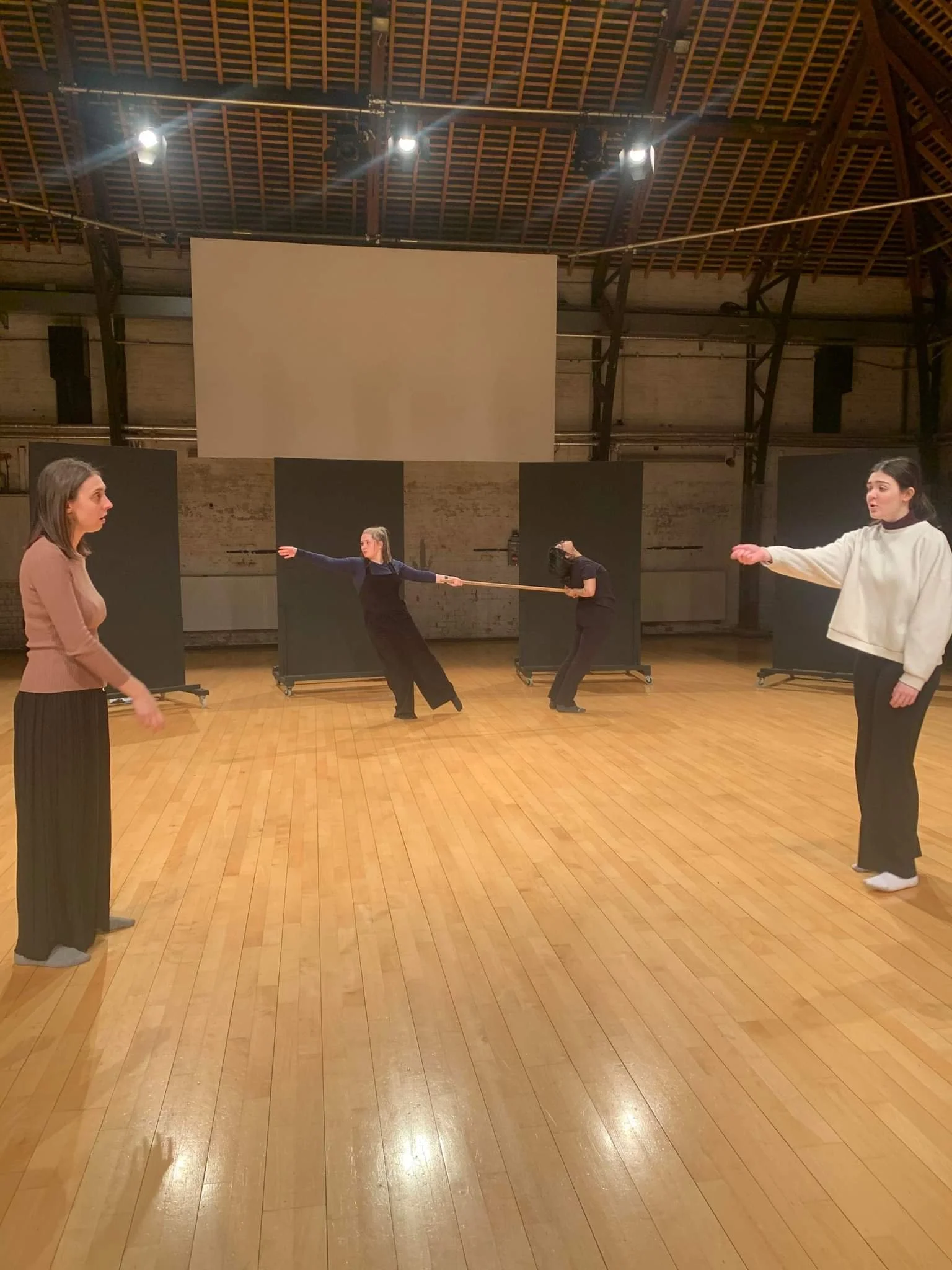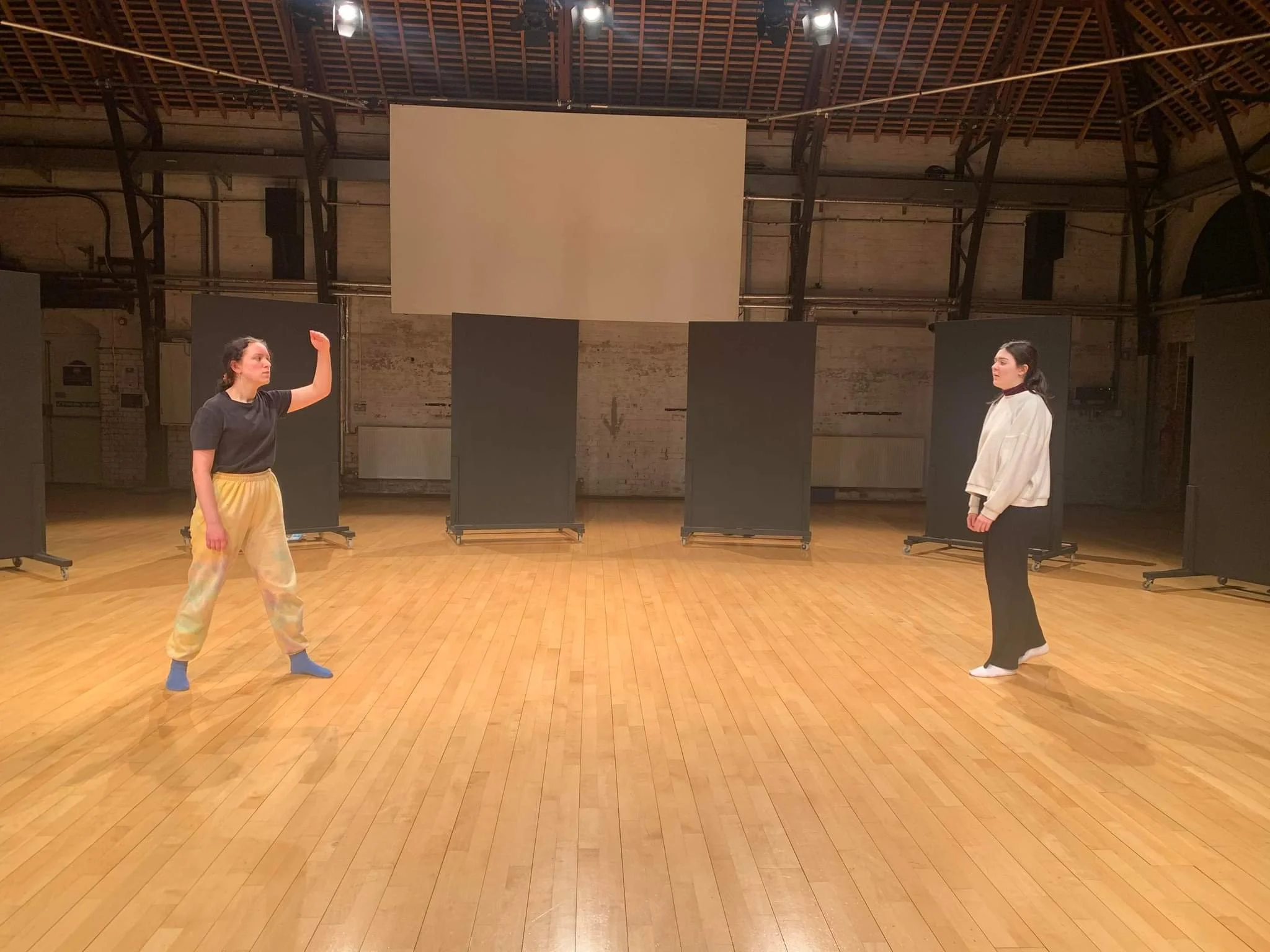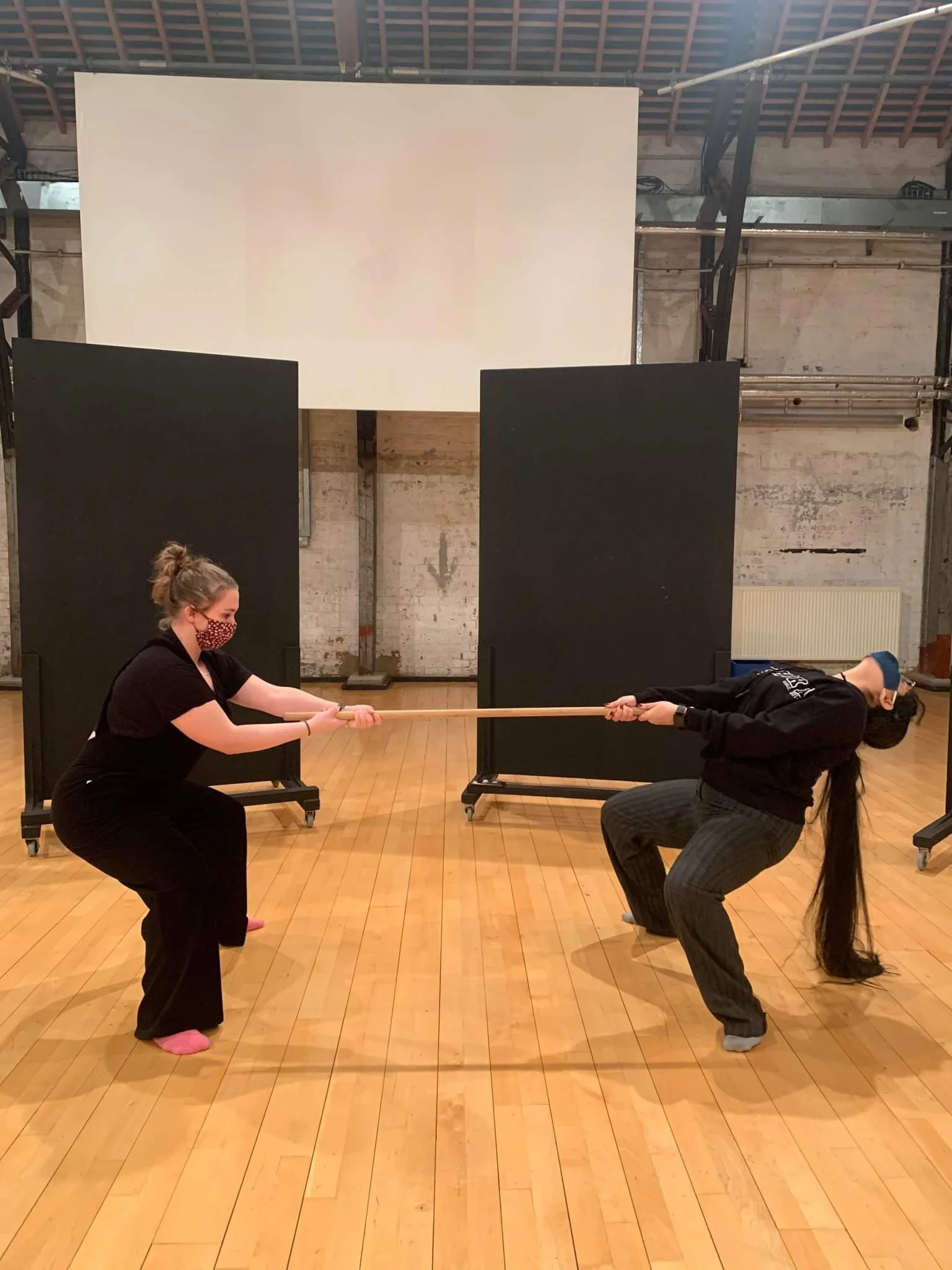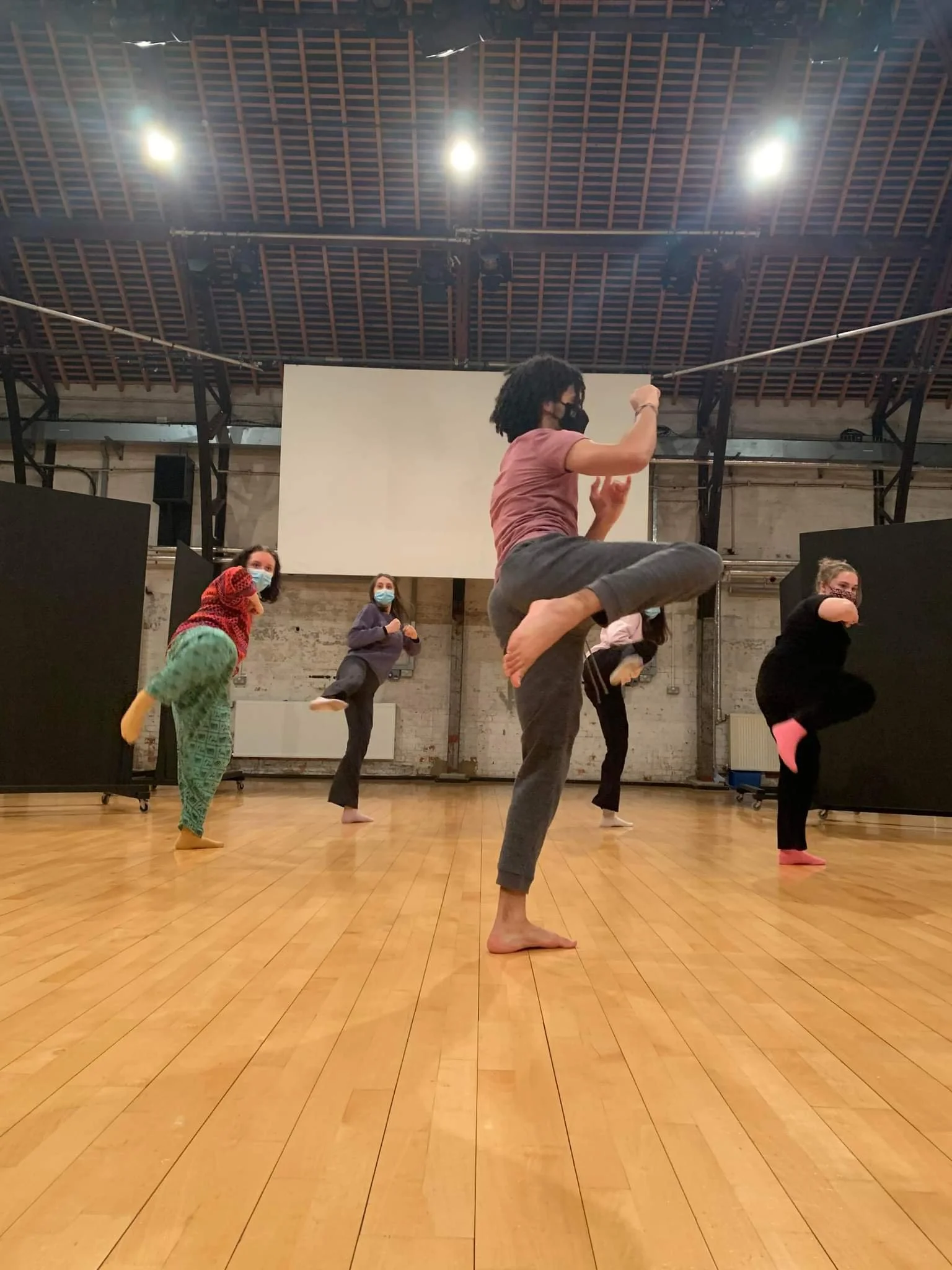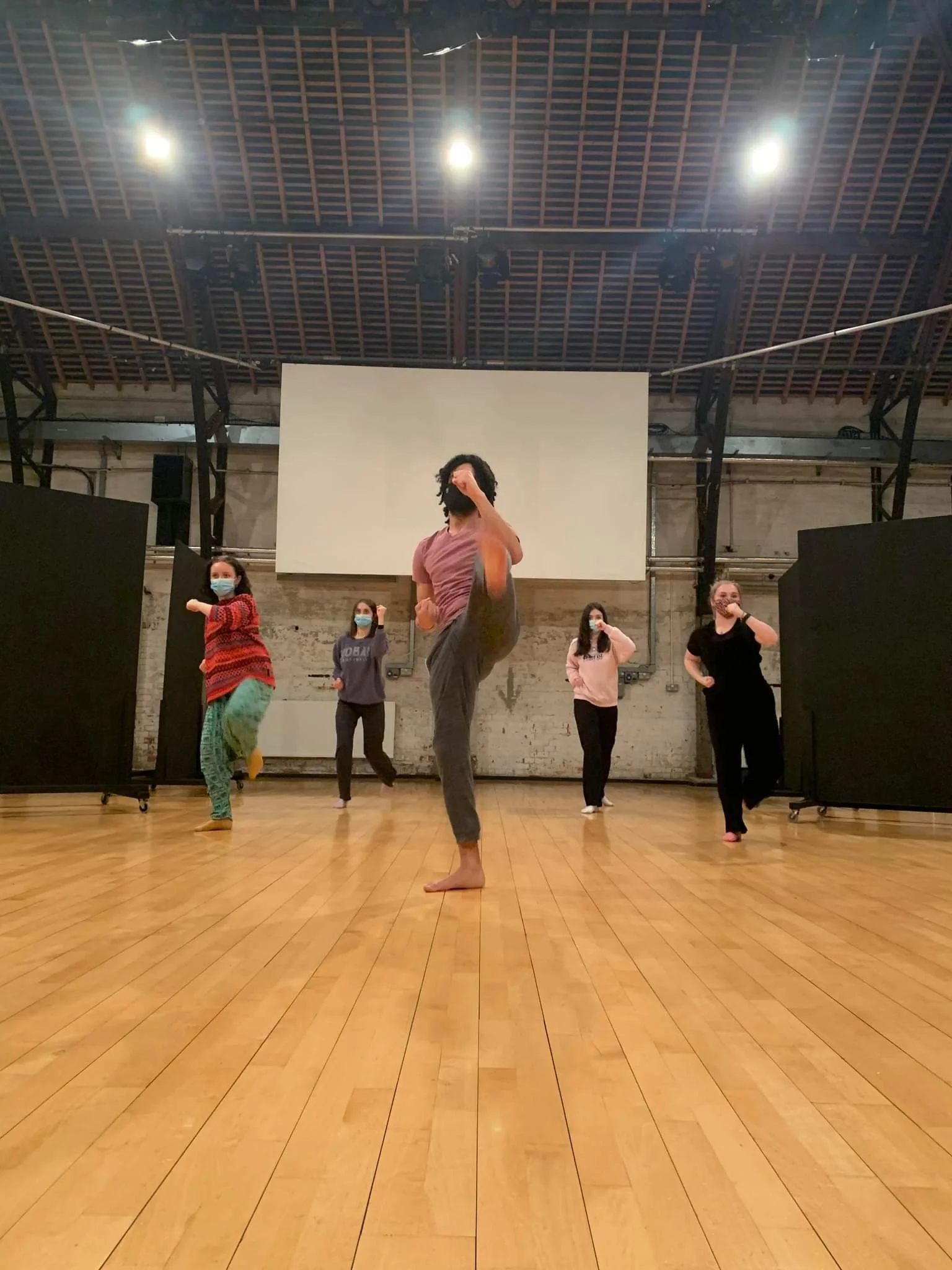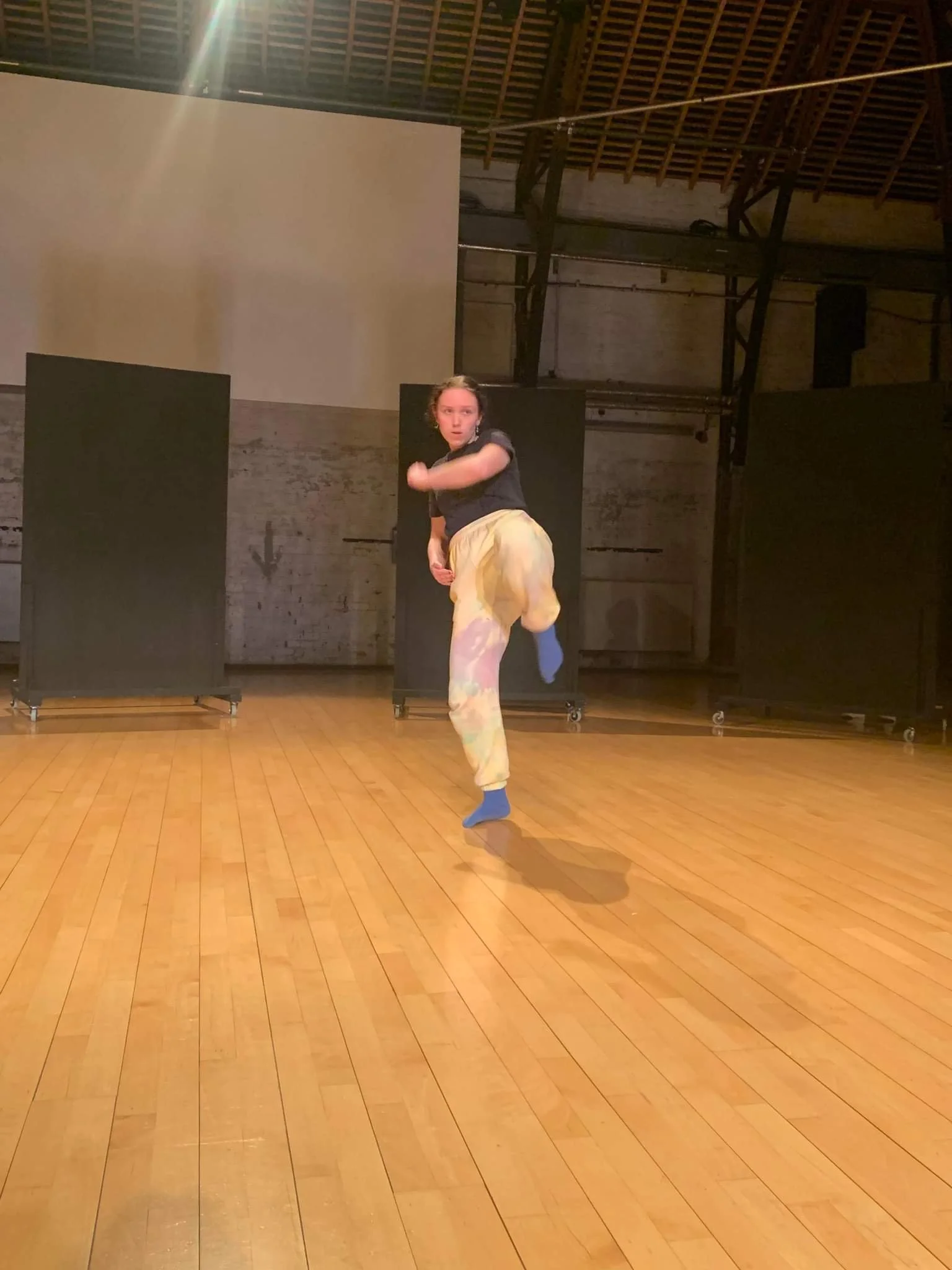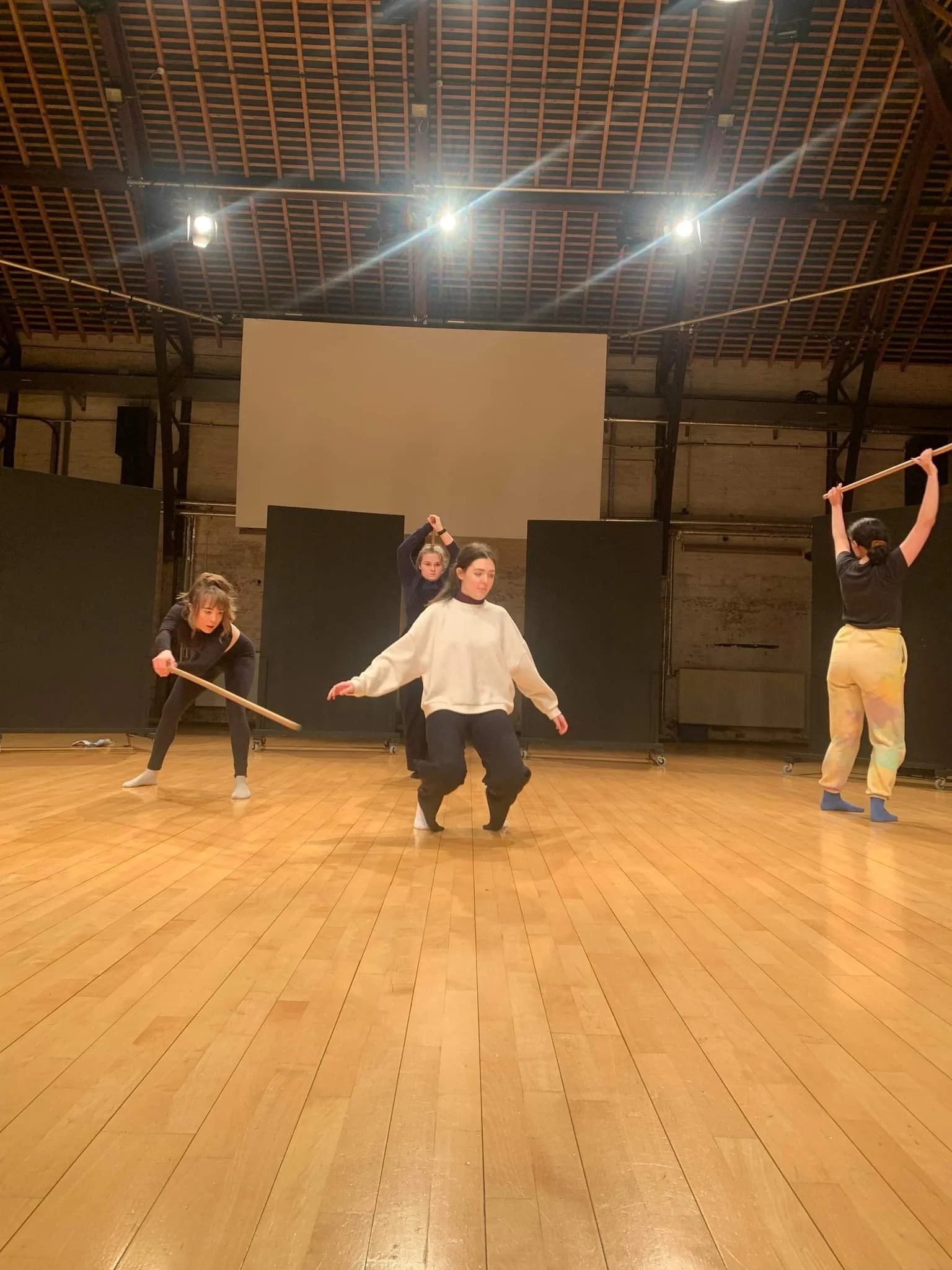The Empty Hand (2021 and 2022)
The Empty Hand is a piece inspired by the work of physical theatre practitioner Dr. Dick McCaw and his studies into how martial arts and actor training can compliment each other. The Empty Hand drew on McCaw’s work to see if physical theatre could be performed as martial arts - making use of techniques from Qigong and Wado-Ryu karate.
The Empty Hand began as a scratch production in Midnight At The Boilerhouse (Autumn 2021) and was later staged as a Research and Development piece in collaboration with The Student Workshop
Inception
The Empty Hand was initially bid to student-led theatre company The Student Workshop as a piece that would explore the interplay between martial arts and physical theatre, drawing on the work of Dr. Dick McCaw and his The Actor’s Body series of books which examined the work of Rudolf Laban and Michael Chekhov.
Research Question: How can pre-existing ways of moving be applied to performance? Can we adapt traditional martial arts into a new performative variation of physical theatre?
Crew:
Writer/Director: Elliot Perlic
Producer: Jessica Lingard-Nutt
Stage Manager: Libby Herbert
Deputy Stage Manager: Leah Carnell
Dramaturg: Majna Resinovič
Publicity and Marketing: Leo Wynne
The Empty Hand promised to be a new piece of experimental theatre that pushed the boundaries of what can be performed as physical theatre and how we understand the sphere of martial arts.
Main Influences: Throughout the production process, we always sought to keep our influences the same for our martial arts. The Empty Hand drew heavily on animated media and the depiction of martial arts in properties like Avatar: The Last Airbender. As a script writer, I also took lots of inspiration from Russell T. Davies’ works like It’s a Sin and Alan Hollinghurst’s novel The Swimmingpool Library for how they write characters and dialogue - especially queer characters.
Even though the script is set against a largely fictitious backdrop, it draws on many real political debates such as the nature of protest and the civil rights debates.
The Plot: The Empty Hand is set against the background of riots surrounding queer rights in society - a form of historical fiction that imagines the story of one young queer person in a world where queer people are still fighting for equal civil rights in the UK. The script primarily follows The Accused, a queer person who is accused of a crime they did not commit. The script analyses the prejudices in the justice, education, and legal systems in the UK as well as how larger social movements impact individual people.
On a narrative level, as a writer and director, I was extremely interested in exploring how perceptions of queerness have changed from the height of the HIV/AIDS pandemic up to 2021 when the script was initially written. The script explores how concepts such as HIV/AIDS, queerness, and legal equality have changed over time and the place they hold in the public conciousness today through use of allegory and physical theatre.
The Empty Hand in Midnight at the Boilerhouse (Autumn 2021)
As part of a bid to receive a commission from The Student Workshop, an excerpt of The Empty Hand was performed in the Autumn 2021 showcase of Midnight at the Boilerhouse (MatB). MatB is a regular showcase of work put on by performing and digital arts students at Royal Holloway, University of London - organised by The Student Workshop.
I performed an excerpt of The Empty Hand alongside Majna Resinovič. We did a deep dive into the characters of The Accused and The Best Friend. Resinovič and I wanted to explore the relationships between these two characters and how it has been impacted by their experiences. We performed the scene titled “If I Came Out” which primarily looks into the friendship the two characters share and how much of their lives they are willing to reveal to each other.
Both myself and Resinovič also entered the process with over a decade of martial arts experience. I work with Wado-Ryu karate primarily, and Resinovič Shoto-Kan karate. We both performed a solo movement sequence in the piece to explore the differences between the two styles and how they translate into physical theatre.
Performing in the Pandemic:
At the time we were to perform The Empty Hand in MatB, the country’s lockdown restrictions were tightened. We adapted the piece so that it would work in a socially distanced way and could be performed by us while wearing face coverings.
Movement in the MatB Piece:
The MatB performance featured 3 primary movement sequences, two solo and one joint. As detailed in the edited script, the movement sequences were designed to convey certain ideas about each character.
In the first movement sequence, I played The Best Friend, and my movement sequence was designed to show a character - metaphorically - “beating themself up” over not revealing something to someone close to them. I took inspiration from katas such as kushanku, shinto, and naihanchi which involve lots of techniques where parts of the body connect in order to show this. I tried the sequence with and without dialogue to explore how speech and words would add to the movement and to see what the movement itself would be able to portray without the need for dialogue.
For the second movement sequence, Resinovič portrayed The Best Friend's “worst case scenario” and the idea of coming out going drastically wrong. It was designed to show movement which was dispassionate and cold, but also sharp and aggressive to symbolise The Best Friend’s idea that a person might - for no logical or visible reason - reject them.
For our third movement sequence, we drew a lot on McCaw’s physical theatre teaching. We played with weight and balance; and used a metre stick to ensure we could still make contact while remaining socially distant. This sequence, between The Best Friend and Peter (a well-meaning heterosexual schoolfriend), was designed to show the everyday power struggles that come from living with a queer identity. Peter doesn’t know that the little jokes and comments he makes actively push The Best Friend down, and The Best Friend has to fight back against something the opponent doesn’t even realise they are doing. The martial arts is a great way to show the metaphorical social battle between the two characters, and the two different styles of karate that Resinovič and I use highlight this further. The stick shows how the power dynamics in the scene are shifting, and when it is dropped midway through the scene this is the moment of realisation for each character that such a battle is about to ensure. The character controlling the stick, whether they know it or not, has the power of the scene and dominates the other.
The Empty Hand Research and Development (2022)
Due to a variety of complications surround budgets, Covid-19 restrictions, and university departmental changes, The Empty Hand’s successful bid could not go ahead as a full production. However, The Student Workshop committee were able to support The Empty Hand as a 30-minute research and development piece during February 2022.
The Student Workshop committee of the 2021/2022 academic year decided they should still like to see The Empty Hand as an academic exercise into the ideas I initially presented surround the performing of martial arts on stage.
During January and February 2022, The Empty Hand underwent a 3-week intensive research and development process which was then performed to the university’s performing and digital arts students; and was also attended by Dr. Dick McCaw.
Performed Friday 11th February 2022 at The Boilerhouse Theatre.
Crew:
Writer/Director: Elliot Perlic
Producer: Jess Lingard-Nutt
Stage Manager-:Libby Herbert
Deputy Stage Manager: Leah Carnell
Dramaturg: Majna Resinovič
Publicity Officer: Leo Wynne
Starring:
The Accused: Annabel Cotton
The Best Friend: Faith Foakes
The Parent: Amber Frizzell
Movement Specialist: Shruti Nayak
Peter: Cora O'Mara
Movement Specialist: Rachel Wickett
The Research and Development Proposal:
The University staff asked that a new proposal for the Research and Development process be submitted. The initial state was as follows:
The Empty Hand is a physical theatre piece that aims to explore how perceptions of queerness and queer communities have changed from the peak of the HIV/AIDS crisis to the 21st century. The script, written by Elliot Perlic, explores how concepts such as HIV/AIDS, queerness, and legal equality have changed over time and the place they hold in the public conciousness today through use of allegory and physical theatre. The Spring Term 2022 Research and Development process will look to build on the The Empty Hand's appearance at Midnight at the Boilerhouse Autumn 2021 appearance (performed by Elliot Perlic and Majna Resinovič) by further exploring how music and the martial arts can be applied to the script and what meanings can be drawn from these.
Below are images from the proposal detailing the rehearsal process, initial timetables, and Covid-19 guideline compliance.
Week 1: Week one of the rehearsal process focused on the three goals detailed on the left. Not many of the crew had previous martial arts experience, and even though they had previous experience performing physical theatre I knew they would need to build themselves up as an ensemble.
I decided the first week of the rehearsal process should focus primarily on building the ensemble and should introduce some initial Laban exercises and martial arts concepts.
Week 3: For the third week, we had planned to directly apply martial arts to physical theatre to finalise our movement sequences. The cast and crew studied Kata Bunkai in this time as well to understand existing ways martial arts were performed and how techniques designed for self-defence could still have a performative nature.
We would also begin staging techniques at this time, placing physical sequences into the script and staging the piece ready to be performed to a live audience the following week.
Adjustments to the Rehearsal Process:
During week two of the process, I tested positive for Covid-19 and had to isolate for the week until I tested negative. Because of this, I was unable to hold or attend any in-person rehearsals. It was decided then that instead all text-based work of the rehearsal process would be pushed into the second week and the third week would become an intensive week of physical theatre and martial arts exploration of making.
We held rehearsals over Zoom every day where we explored characterisation and ensured that everyone was confident with performing the scenes on stage so that during the third week we would be able to insert the movement sequences directly into the piece and be ready to perform on time.
Staging a Production with Physical Distancing:
Even though we could have a live audience, The Empty Hand was still required to be performed physically distanced. As a director, I came up with several solutions to allow for physical theatre to be performed physically distanced.
I made use of props and sets to allow performers to make contact with each other without touching them physically. We used long sticks (the same kind used in the MatB iteration) to allow performers to make contact with each other and feel each others’ weight while still being physically distant. Our set was made up of 6 large black screens that could be moved along the stage. These screens were used to frame the stage and provide make-shift wings, but they also acted as barriers between performers so they could be close together with a barrier between them preventing and possibility of infection.
Week 2: Rehearsal week two would continue the ideas brought in during week one but with a further focus on the martial arts and physical theatre exercises introducing new practitioners such as McCaw and Chekhov. Dr. Dick McCaws’s The Actor’s Body series alongside my own studies with him in Qigong and physical theatres were our primary influences in developing the cast’s understanding of martial arts concepts and ways of moving.
Week two also introduced text in the process as we began to create movement sequences and see how ideas in the text could be communicated through martial arts techniques and ideas in karate such as zen-shin.
Performing Martial Arts:
We decided to take on three different approaches when performing martial arts. I worked with Resinovic to devise three different ways of making and performing martial arts and physical theatre.
1: The first we styled “pure physical theatre” which was physical theatres with no martial arts influence at all. These sequences were performed as a way to compare how other physical theatre styles differed from our developing use of martial arts and physical theatre. I used physical theatre techniques utilised by Frantic Assembly, making use of ideas around weight, still images, transitions, and micro-movements to create physical theatre in their style.
2: The second we named “blended physical theatre” where we made use of these same Frantic Assembly inspired devising techniques but with martial arts techniques inserted. Where we may initially use a push as a form of contact between two performers, we wanted to explore how a block, kick or punch could be used to make contact instead. Rather than shifting weight to change positions, we wanted to see how we could use shifts in stances instead.
3: Our third was determined to be “pure martial arts” where performers would demonstrate a combination of techniques or a kata on stage during a scene. This was to be the polar opposite of style one which incorporated no martial arts at all, this style would instead make use of purely martial arts techniques to convey meaning to the audience and act as movement sequences in scenes.


